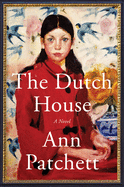
Built in 1922, in the Philadelphia suburb of Elkins Park (then mostly farmland), the eponymous house takes its name from the VanHoebeeks. The family lavishes their fortune on a dwelling that features a ballroom and Delft mantels imported from a castle in Utrecht. Selling off parcels of land in the aftermath of the Depression, the VanHoebeeks occupy the house until 1944, when it sits idle until it's purchased by Cyril Conroy, a World War II veteran who's beginning to dabble in real estate development.
The youngest member of the Conroy family, Danny, recounts how that optimistic purchase profoundly shapes his family's story over the next five decades. Revolted by her ambitious husband's extravagance and motivated by a strong social conscience, Cyril's wife, May, decamps for India several years after the family moves in, to work among the poor. She leaves behind three-year-old Danny and his 10-year-old sister, Maeve. After the divorce, and Maeve's departure for college in New York City, Cyril remarries--the first in a series of events that culminate in the Conroy children's eventual banishment.
Ann Patchett (Commonwealth) focuses on the sibling relationship between Maeve, who returns to the Philadelphia area to handle the finances of a frozen vegetable distributor, and Danny, who secures a medical degree but never abandons his ambition to follow his father into the real estate business. She probes their emotional bond, which is both strengthened and tested by their mother's sudden abandonment. In The Dutch House, Patchett demonstrates her gift for perceptive character portraits and her depth of understanding of the way people both damage and forgive those most dear to them. --Harvey Freedenberg, freelance reviewer

